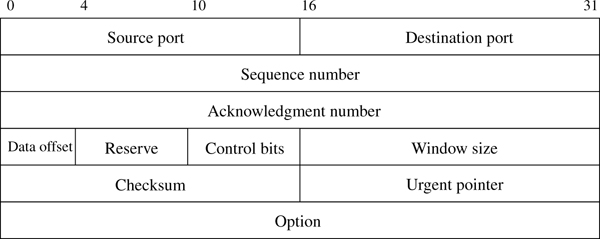2
TRANSPORT-LAYER PROTOCOLS
This chapter explains protocols in the transport layer, which is the fourth layer of the Open Systems Interconnection (OSI) reference model. Transparent transfer of data between end users using services of the network layer is provided. The well-known protocols in this layer are Transmission Control Protocol (TCP), User Datagram Protocol (UDP), Stream Control Transmission Protocol (SCTP), and Real-time Transport Protocol (RTP).
2.1 TRANSMISSION CONTROL PROTOCOL
Transmission Control Protocol is a connection-oriented, end-to-end, reliable protocol in the transport layer [1]. Creation of connection is needed before sending the data. TCP has the advantage of transporting data reliably. Lost packets are resent by a TCP retransmission mechanism. There are many protocols that rely on TCP, such as FTP, HTTP, POP3, and SMTP. However, TCP is not suitable when transmission speed is more important than reliability, such as with telephone or video conferencing over the Internet.
2.1.1 Transmission Control Protocol Header Structure
Figure 2.1 shows the TCP header structure.
- Source port and destination port identify the application service of both sender and receiver.

Figure 2.1 TCP header structure.
- Sequence number specifies a number from the first data byte in a particular segment. If the Synchronize Sequence Numbers (SYN) flag is set, the sequence number is the ...
Get Advanced Internet Protocols, Services, and Applications now with the O’Reilly learning platform.
O’Reilly members experience books, live events, courses curated by job role, and more from O’Reilly and nearly 200 top publishers.

